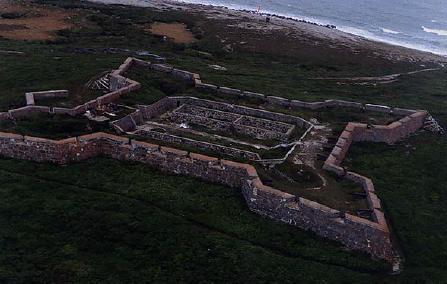1 PhD Candidate, Department of Civil Engineering, University of Calgary Schulich School of Engineering, Calgary, AB, T2N 1N4, Canada, acisfeld@ucalgary.ca
2 D.Phil., Professor, Department of Civil Engineering, University of Calgary Schulich School of Engineering, Calgary, AB, T2N 1N4, Canada, ngshrive@ucalgary.ca
ABSTRACT
The Prince of Wales Fort was constructed in the 18th century in the Vauban style, with ashlar face stones encasing a core of rubble stone masonry. The fort is located in Churchill Manitoba, and has thus been subjected to extreme weather conditions. The exposure has caused severe degradation and washout of the original mortar creating highly variable core conditions, which have led to lateral deformation of sections of the wall in some areas, and collapse in others. Restoration of the severely damaged sections was begun within the last decade, but meanwhile, sections of wall that were previously in good condition have begun to show signs of distress. Development of a conservation plan to prevent degradation of the undamaged wall sections was deemed essential.
A two dimensional finite element model has been formulated to represent the in-situ conditions of a damaged wall section. The model was created in Abaqus and focuses on the case of self weight. Micro-modelling techniques were employed to model the stones individually and define the behaviour of interactions between the individual stones. The resulting displacements have been examined, and compared to the actual displacements as well as the results of discrete element modeling. Beginning with a model of a deteriorated wall section will provide a basis upon which a variety of restoration methods can later be investigated.
KEYWORDS: finite element modeling, discrete element modeling, masonry, restoration, structural analysis
157.pdf



